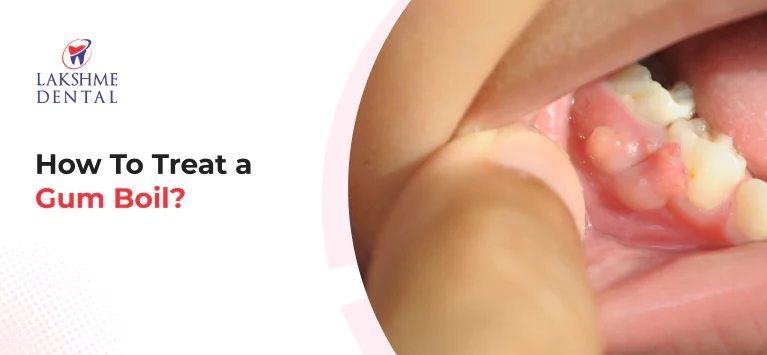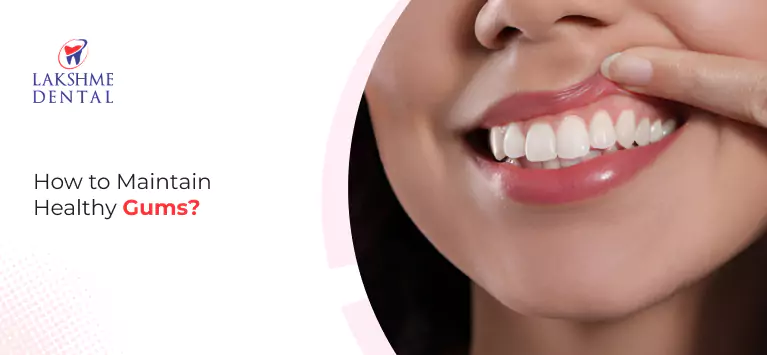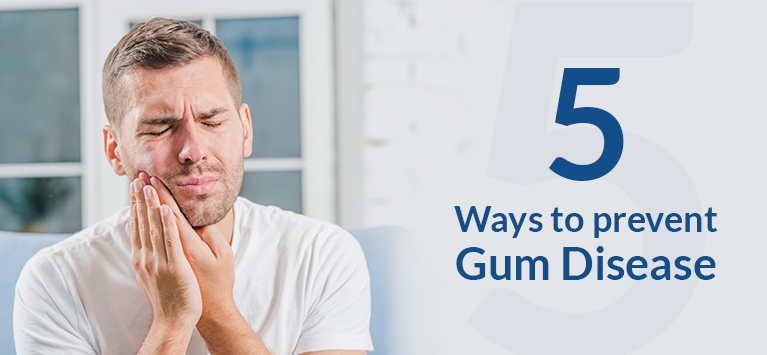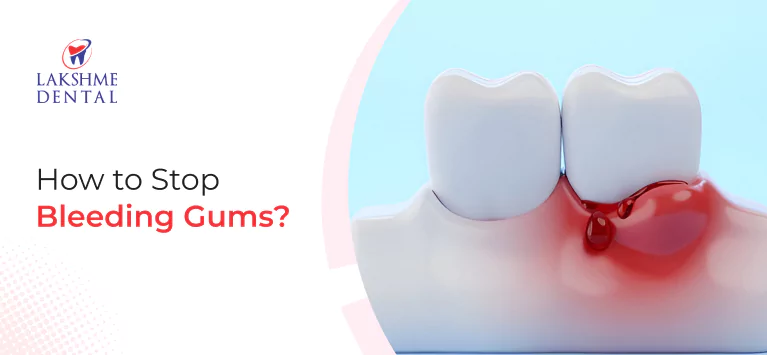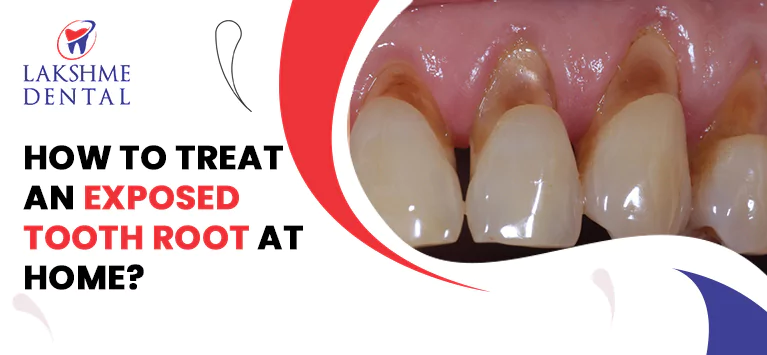
How to Treat an Exposed Tooth Root at Home?
An exposed tooth root can be an uncomfortable and concerning issue. It occurs when the protective enamel of a tooth wears away, revealing the softer, more sensitive root beneath. This can happen due to gum recession, tooth decay, injury, or aggressive brushing.
While it’s important to consult a dentist to prevent further damage and complications, there are several practical steps you can take at home to manage the discomfort and protect the exposed tooth root.
This blog post will discuss the causes of an exposed tooth root, symptoms, and practical home remedies to alleviate the pain and protect your oral health.
What Causes Exposed Tooth Roots?
Gum Recession: The most common cause of an exposed tooth root is gum recession. As the gums recede, they pull away from the teeth, leaving the root exposed. Gum recession can occur due to aging, periodontal disease, or improper oral care habits.
Tooth Decay: If cavities form near the gum line and aren’t treated promptly, the decay can erode the enamel, leading to an exposed root.
Aggressive Brushing: Brushing your teeth too vigorously or with a hard-bristled toothbrush can cause the gums to recede and damage the enamel.
Teeth Grinding (Bruxism): Habitual grinding of teeth can wear down the enamel and cause the roots to become exposed.
Trauma or Injury: Physical injury to the teeth, such as a fall or accident, can result in broken or chipped teeth, exposing the tooth root.
Symptoms of an Exposed Tooth Root
Sensitivity: One of the most common symptoms of an exposed tooth root is tooth sensitivity. This can include pain or discomfort when consuming hot, cold, sweet, or acidic foods and drinks.
Visible Roots: If you notice the root of your tooth is visible (usually near the gumline), it’s a clear sign that the protective enamel has worn away.
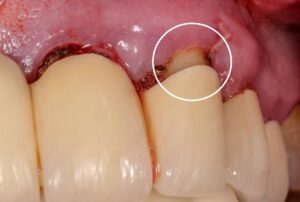
Gum Recession: You may observe that your gums are receding or pulling away from your teeth, especially around the affected tooth.
Discomfort or Pain: Persistent discomfort, throbbing, or sharp pain around the exposed tooth may indicate further damage or infection.
Home Remedies for Exposed Dental Roots
While a dentist’s intervention is crucial for addressing the root cause and preventing complications, there are several home remedies that can provide temporary relief and protect the exposed root in the meantime.
Use a Desensitizing Toothpaste
Desensitizing toothpaste, specially formulated for sensitive teeth, contains compounds that block the transmission of pain signals from the surface of the tooth to the nerve. These toothpastes can help soothe discomfort caused by an exposed tooth root.
How to use: Brush your teeth with a desensitizing toothpaste twice daily. Make sure to gently brush the affected area. Avoid brushing too hard, as this could worsen gum recession and further expose the root.
Apply a Saltwater Rinse
Saltwater is a natural antiseptic and can help reduce inflammation and discomfort caused by an exposed tooth root. A saltwater rinse can also help cleanse the area of any bacteria and prevent infection.
How to use: Dissolve one teaspoon of salt in a glass of warm water. Gently rinse your mouth for 30 seconds, making sure to concentrate on the affected area. Repeat this twice daily to soothe the pain and promote healing.
Use a Soft-Bristled Toothbrush
Switching to a soft-bristled toothbrush can reduce irritation to your gums and enamel. Hard or medium-bristle brushes can aggravate gum recession, making the exposed root more vulnerable.
How to use: Choose a toothbrush with soft bristles and brush your teeth gently in a circular motion. Avoid using aggressive brushing techniques to prevent further gum recession.
Avoid Acidic or Sugary Foods and Drinks
Acidic foods (like citrus fruits, tomatoes, and vinegar) and sugary beverages (like soda and sweetened juices) can induce sensitivity in exposed tooth roots. These foods can also contribute to further erosion of enamel and increase the risk of tooth decay.
How to manage: Try to avoid or minimize your consumption of acidic or sugary foods, especially if you’re experiencing sensitivity. If you do consume these foods or drinks, rinse your mouth with water afterward to neutralize acids and help protect your enamel.
Use a Cold Compress
If you’re experiencing pain or swelling around the exposed tooth, a cold compress can provide temporary relief. The cold helps numb the area, reducing pain and inflammation.
How to use: Wrap ice in a clean cloth or use a cold pack and apply it to the affected area of your face (near the tooth) for 15–20 minutes. Repeat this as needed, but avoid placing ice directly on the skin to prevent frostbite.
Clove Oil for Pain Relief
Clove oil has been used for centuries for its numbing and antiseptic properties. Eugenol, the active ingredient in clove oil, can help alleviate tooth pain and reduce inflammation around the exposed root.
How to use: Dab a small amount of clove oil on a cotton ball or swab and gently apply it to the exposed root area. Do this a few times a day for pain relief. Be cautious with the amount, as clove oil can be quite strong.
Aloe Vera Gel
Aloe vera has soothing, anti-inflammatory, and antibacterial properties that can help reduce swelling and promote healing in cases of gum recession and tooth sensitivity. It can also help soothe irritated gums around an exposed tooth root.
How to use: Apply fresh aloe vera gel to the affected area and leave it on for a few minutes. Rinse your mouth with water afterward. Repeat this process 2–3 times a day.
Avoid Smoking and Alcohol
Smoking and excessive alcohol consumption can impede the healing of your gums and increase the risk of infection around the exposed tooth root. Smoking, in particular, contributes to gum disease and recession, further worsening the condition.
How to manage: If possible, quit smoking or at least reduce your consumption of tobacco products. Limit alcohol consumption to allow your gums to heal more effectively.
Protect the Tooth with a Temporary Sealant
If you are waiting for a dental appointment and need to protect the exposed root, you can use a temporary dental sealant available over the counter at most pharmacies. These products are designed to cover the exposed root and protect it from pain caused by temperature changes or food.
How to use: Follow the instructions provided with the sealant product. These sealants can typically be applied directly to the exposed root area and provide temporary protection.
When to See a Dentist?
While home remedies can help alleviate symptoms and provide temporary relief, it’s important to remember that treating an exposed tooth root at home is not a permanent solution. You should see a dentist as soon as possible to address the underlying cause and prevent further damage to your tooth and gums.
Your dentist will assess the condition of your tooth and gums and may recommend treatments such as:
Dental bonding or filling: To cover the exposed root and protect it from further damage.
Gum grafting: A surgical procedure to restore lost gum tissue and prevent further recession.
Root canal therapy: If the exposed root has been severely damaged or infected, a root canal may be necessary.
Conclusion
An exposed tooth root can be a painful and distressing issue, but with the right care and home remedies, you can manage the discomfort until you see a dentist. Using the above mentioned home remedies are some effective ways to alleviate sensitivity and protect the exposed root. However, it’s essential to seek professional dental care to address the root cause and prevent further complications. If you notice your symptoms worsening, call us to speak with our dentist.

